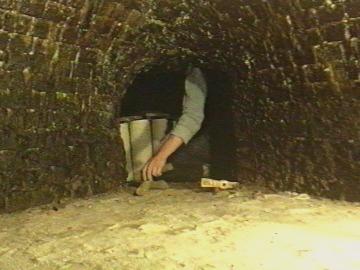

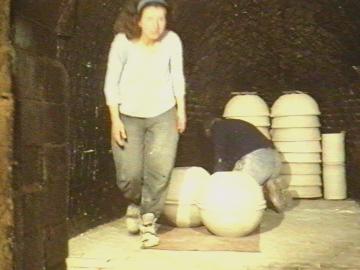
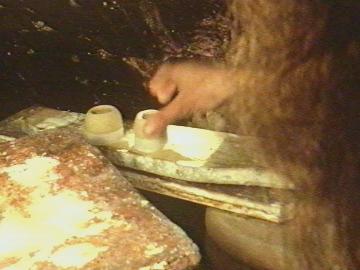 Huge piles of green pots are stored on the floor above the kiln. The selected
pots are handed down and stacked rim to rim in the kiln.
Huge piles of green pots are stored on the floor above the kiln. The selected
pots are handed down and stacked rim to rim in the kiln.Here are some segments of columns and spheres for garden design drying on the kiln.
Test rings and cones are placed when the spyhole on the back is reached. They
are the only means for temperature control.
Question: How old is this kiln?
Eberhard:" It has been constructed about 20 years ago."
Q.: Did you join the construction?
E.:" Yes, indeed. A mason came from Finsterwalde, but he never before
had constructed a kiln ... he tried to learn from the others and started work.
Without any support forms. He started here in the back and on the sides and
then proceeded by estimation. A little mistake happened here in the front. When
he starts the wall already with a slope he gets a bad arch curvature. The first
rows have to be straight up, then the arch is rounded.
Q.: You produced your own bricks for the kiln?
E.: "No, these are heavy firebricks which have been
delivered."
The bagwall is placed in the end.
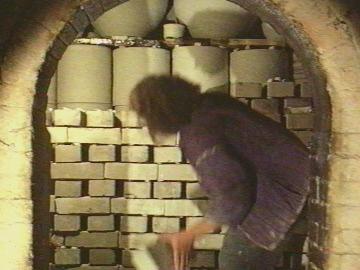
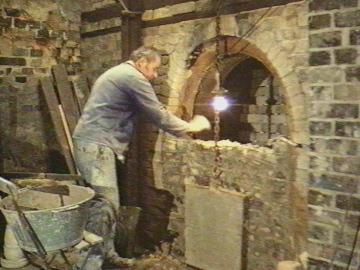
A small fire in the ashpit heats the kiln carefully to 100°C within two days. The remaining water is driven out of pots and bricks in that time. Hot flames still have a reasonable distance to the first stacks.
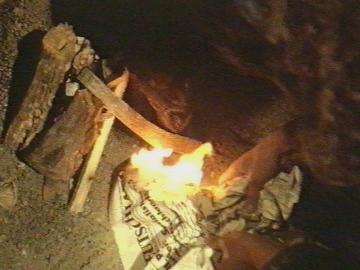
After the preheating is finished the ashpit is covered and Christel now stokes the grate in the lower firemouth to increase temperature. A hanging door prevents cold air from rushing in.
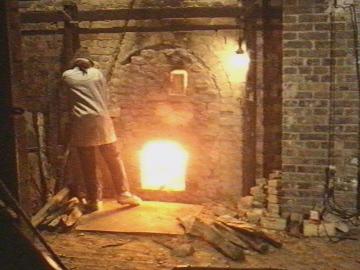
The stokers in front of the kiln now are dressed in thick cloth for protection and the stoking cycles get shorter. The pauses are just long enough for catching a deep breath. Slowly also the pots in the back start to glow. Flames lick on cones and the ware.
Eberhard fires the kiln since dawn . The upper firemouth has been cracked open and functions as a gas producer firebox for reaching higher temperatures. The wood does not burn down totally. A part is degased on the grate, then the gases mixes with air from the upper firemouth and combustion takes place already in the stacking area. The coal bed is rising to the upper firehole. Stoking is now performed nearly without interruption and the stock of firewood diminuishes.
The firing is now a struggle for every degree of temperature.
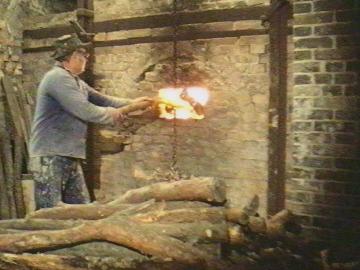
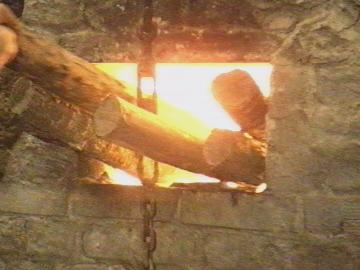

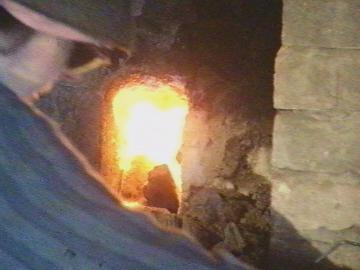
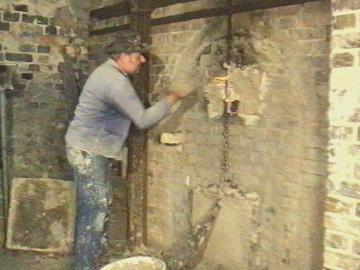
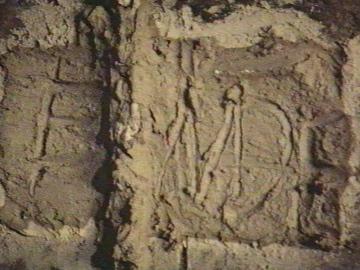
camera: Gerhard Meidinger / director: Mani Tille / sound: Jens-Peter Planke / speaker: Peter Veit / music: Martin Spies / cutttin&mixing: Gerhard Meidinger
produced in march 1991 / pottery Christel Kiesel / Crinitz(Brandenburg)
with Christel Kiesel and Eberhard Tunsch
a Kalkspatz e.V. production © 1992